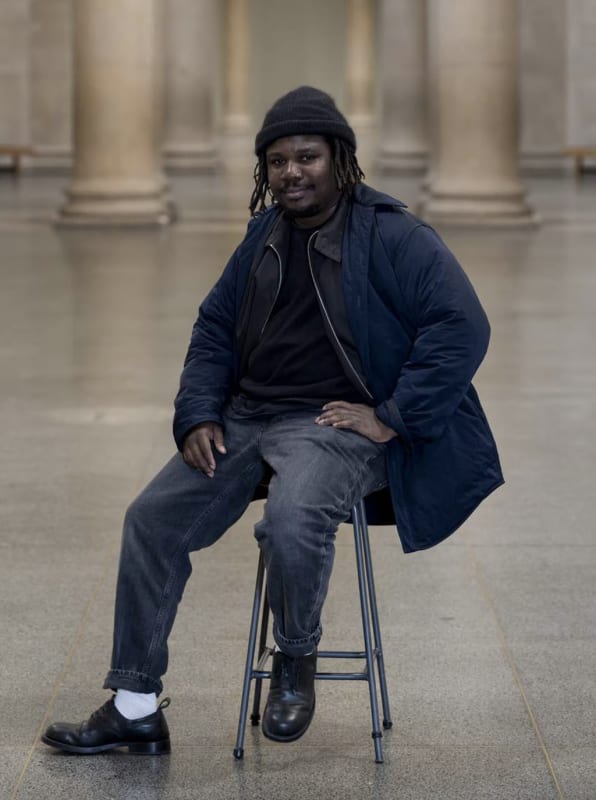Alvaro Barrington gets a visit from Hypeart To discuss home and his meteoric rise in the art world
By Shawn Ghassemitari
Alvaro Barrington has bopped around quite a few times in his life. The rising painter was born to Grenadian-Haitian parents in Caracas, Venezuela, but saw much of his coming of age transpire between Brooklyn and the Caribbean. Currently, he is based in London, where he has lived and worked for nearly a decade since graduating from the Slade School of Art in 2017. Barrington understands: no matter where you are in the world, you’ve always 'gotta be fresh,' he tells Hypeart, 'because you’re always going to be representing where you’re from.'
Flatbush is indelibly the place Barrington calls home today. And he carries much of the same spirit as his borough through his own art, which recalls notes of Biggie Smalls and Tupac Shakur, mixed with Afro-Caribbean traditions and Western art history. While he primarily describes himself as a painter, Barrington employs a multimedia approach to exploring interconnected histories and cultural production — conflating oils and acrylics with burlap, yarn, wood and neon signage — as a meditation on the very notion of home, both the real and metaphysical.
Can you expand on the New York City of your youth, from the ‘90s till today. How has the mood or vibe changed?
New York in the ‘80s and ‘90s was tough. ‘90s and 2000s, there was a lot of violence, but people weren’t struggling — I mean we were struggling, but it wasn’t like today, where most people in New York are living paycheck to paycheck. You get on the subway and you know you have to work 60 hours this week just to pay the bills and if the train is late, you might have to cut lunch that day. New York is different because everyone is just trying to survive, even the wealthy people. There was an article saying that earning 200 grand is like 80 in another city. But that’s also why so much creativity comes out of New York.
Your practice encompasses so many different mediums. How would you define it?
I’m a painter… I like my work to do what Tupac did. I really think I’m a disciple of him. In a way, I would like for it to be what big homie did for me, using the tools he had, which was his voice. Whereas, I know how to make a good painting. He may look at an Anita Baker track and figure out how to use the sound. I kind of do that with painting, I think about sampling all the time.
(...)














































































































































































